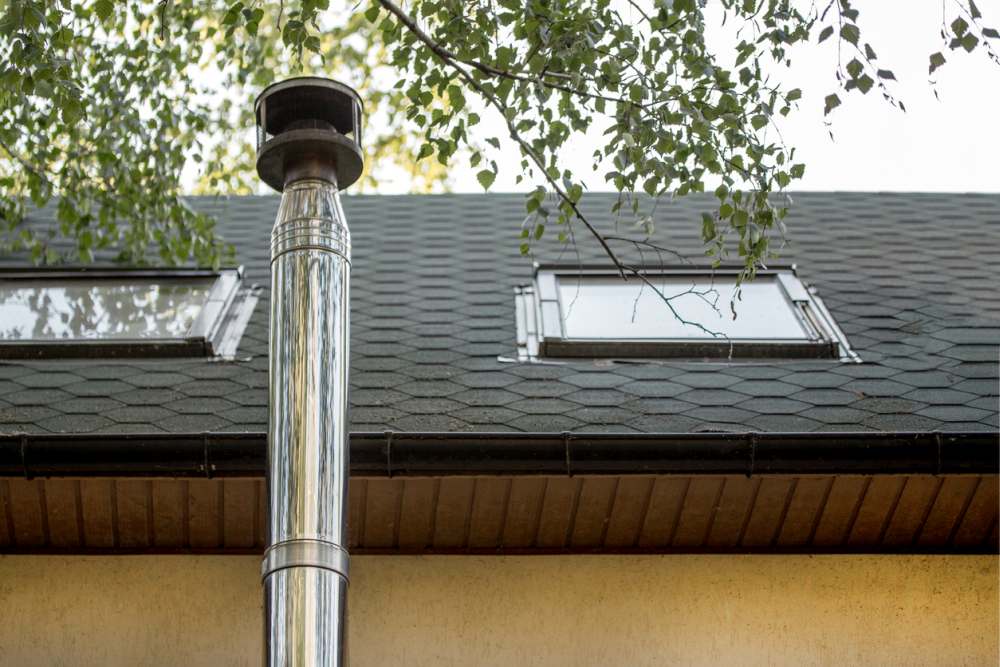The article which follows pertaining to What Is A Plumbing Vent & How Do They Work? is totally stimulating. Try it and draw your own personal findings.

Proper air flow in plumbing systems is commonly overlooked, yet it is essential for preserving the performance and security of your home's plumbing. Ventilation helps regulate air pressure, protect against the build-up of unsafe gases, and make certain the effective removal of waste. In this guide, we will certainly check out the importance of proper pipes ventilation, just how it functions, and the benefits it offers your pipes system.
How Air Flow Functions in Pipes Solutions
Air Pressure Law
Appropriate ventilation maintains well balanced air pressure within the pipes system. When water moves through pipelines, it displaces air. Without adequate ventilation, this variation can develop negative pressure, leading to reduce drains or siphoning of water from traps, which can create unpleasant smells to leak right into the home.
Protecting Against Sewer Gas Build-up
One of the most vital features of pipes vents is to avoid sewage system gases, such as methane and hydrogen sulfide, from building up within the home. These gases can posture serious health risks and are extremely combustible. Vent pipelines permit these gases to escape safely outside.
Assisting in Waste Removal
Ventilation helps in the effective removal of wastewater by preventing airlocks in the drain system. When air can flow freely through the vents, it permits water and waste to move efficiently through the pipelines, minimizing the threat of clogs and back-ups.
Advantages of Proper Air Flow
Improved System Performance
Appropriately ventilated pipes systems operate extra successfully, with fewer clogs, faster draining pipes, and much less strain on the pipelines. This efficiency prolongs the lifespan of the plumbing system.
Improved Air Quality
By stopping sewer gases from entering your home, appropriate air flow contributes to much better interior air quality, making your living environment healthier and extra comfortable.
Stopping Water Damages
Ample air flow helps protect against water from being siphoned out of catches, which can result in sewer gases getting in the home and creating water damages with time.
Steps to Guarantee Appropriate Ventilation
Consulting Plumbing Codes
Constantly get in touch with regional plumbing codes when designing or modifying your pipes system. These codes provide the required guidelines for correct venting and guarantee your system meets security standards.
Normal Evaluation and Upkeep
Regular examinations can help recognize potential air flow concerns before they end up being significant troubles. Maintenance tasks, such as cleansing air vent pipes and checking for obstructions, are crucial for keeping the system in good working order.
Professional Setup
For new setups or major alterations, it's important to employ a specialist plumbing. They have the knowledge to make certain the ventilation system is appropriately created and set up according to code.
Understanding Ventilation in Plumbing
Ventilation in plumbing describes the network of pipelines that enable air to flow with the drain system. These vents offer several objectives, including regulating air pressure within the pipelines, protecting against drain gases from entering the home, and assisting in the smooth flow of wastewater.
Sorts Of Plumbing Vents
Key Stack Vent
The primary stack vent, additionally known as the air vent pile, is the primary air vent in a pipes system. It extends from the primary drainpipe align with the roofing system, permitting gases to run away and fresh air to go into the system.
Branch Vent
Branch vents link to the main pile air vent and serve individual components, such as sinks, commodes, and showers. These vents make sure that each fixture has adequate air flow to work properly.
Air Admittance Shutoff (AAV).
An Air Admission Valve (AAV) is a one-way valve that allows air to enter the plumbing system without the need for a typical vent pipeline prolonging through the roof covering. AAVs are typically made use of in remodellings or areas where mounting a basic vent is unwise.
Indications of Poor Ventilation in Plumbing.
Slow Draining Fixtures.
If your sinks, bathtubs, or toilets are draining gradually, maybe an indicator of inadequate air flow. Insufficient air flow can produce a vacuum cleaner effect, making it difficult for water to drain correctly.
Gurgling Sounds.
Gurgling audios coming from drains pipes are usually an outcome of air being drawn via water traps due to unfavorable pressure in the pipelines. This is a clear sign of insufficient ventilation.
Undesirable Odors.
Sewage system odors inside your home are a warning that your pipes system is not effectively ventilated. This might suggest that sewer gases are not being adequately vented outside, resulting in possibly unsafe conditions.
Common Ventilation Blunders.
Inadequate Vent Sizing.
Making use of small vent pipes can bring about poor air flow and pressure inequalities in the system. It's essential to use vents that satisfy the details requirements of your plumbing system.
Improper Vent Positioning.
Positioning vents also far from the fixtures they serve can minimize their performance. Appropriate positioning ensures that air can move freely and successfully through the system.
Ignoring Code Needs.
Building regulations offer particular standards for plumbing ventilation. Overlooking these codes can cause a system that stops working to work appropriately and may result in costly fixings or carcinogen.
Conclusion.
Correct ventilation is a crucial element of any type of pipes system, making sure that it operates effectively and securely. By recognizing the relevance of ventilation, recognizing the signs of poor air flow, and taking actions to maintain your system, you can avoid costly problems and secure your home's air high quality.
4 Things You Should Know About Your Plumbing Vents
What Plumbing Vents Are
Also called a vent stack, a plumbing vent is a vertical pipe attached to your drain line that runs through your roof. The plumbing vent pipe, or plumbing air vent, removes gas and odors from your plumbing system and allows fresh air to enter the pipes, helping the water to flow out of the drain pipes.
What Plumbing Vents Do
Plumbing vents have two basic functions. One of which is to allow unpleasant smelling wastewater and sewer gasses to escape your plumbing system instead of entering your home. Plumbing vent pipes are typically located on roofs, away from windows, to ensure the fumes exit the home completely.
The other function of the plumbing vent is to move fresh air into your plumbing system. This helps move water through every plumbing fixture in your house, like toilets and sink drains. Think of the way in which you need to let a little air into the bottle as you pour soda in order to make the drink flow smoothly.
Different Types of Plumbing Vents
True vent: This is the most common vent option. In simplest terms, a true vent is a vertical pipe attached to your drain line that exits through the roof. They often function as the main vent that other fixtures can connect to. Re-vent pipe or auxiliary vent: Attached to the drain line near specific plumbing fixtures, re-vent pipes run up and over to connect to the main vent. Common vent: Two plumbing fixtures installed on opposite sides of a wall are typically tied into the vent stack using something known as a sanitary cross. Wet vent: This venting option operates as a drain pipe and a vent at the same time. Wet vent drainage systems drain water from one fixture while venting the air from another. Although they’ve been used for over 100 years, wet vent systems have only recently been added to the plumbing code in many areas. If you’re planning on installing one in a bathroom remodel, make sure you check your local code prior to construction. Loop vent: For free-standing fixtures like kitchen island sinks, loop vents are ideal. These vent pipes run under the floor, rise from the P-trap, and create a loop inside the cabinet sink. Air admittance valve: An AAV is a one-way mechanical valve typically installed at the site of the plumbing fixture. AAVs allow venting to occur without having to tie into a larger venting system. They’re ideal for venting fixtures where you aren’t able to easily connect to an existing vent system. Common Plumbing Vent Issues
Although vent pipes typically don’t have water flowing through them, they’re still subject to many typical plumbing issues. For example, clogs are one of the most common problems associated with sewer vent pipes. If your vent pipe gets clogged, all of your plumbing fixtures tied into the vent stack will be affected.
A sink with a slow drain that bubbles and gurgles or a strong sewage smell around your toilet are both indicators that your toilet vent pipe is clogged. Because most vent pipes exit through the roof, old leaves, twigs or even a bird’s nest could be clogging the pipe.
Clogs in your vent pipe system cause a buildup of negative pressure, meaning that water won’t be able to flow out of your home very well. It’s similar to putting your finger over the opening of a straw to trap water inside. When you remove your finger, the water is able to flow out of the straw.
If you suspect you have any blockage in your vent, make sure you have a professional come examine the situation. Left unchecked, a blocked air vent can lead to other costly repairs, like leaks and sediment buildup.
Under Pressure
Pipe vents are essential aspects of a home’s plumbing system. Owning a home means learning about all sorts of things you never put much thought into before. But by understanding as much as you can about the important systems of your home, you can keep those budgets intact and those anxiety levels low.
https://www.homeserve.com/en-us/blog/home-improvement/plumbing-vents/

Do you really like reading up on Why Plumbing Air Vents Are Important? Write a short review directly below. We will be glad to see your thoughts about this blog. We are looking forward that you come back again before long. Remember to take the time to distribute this write-up if you appreciated it. Thank you for being here. Please check our blog back soon.
Call Today